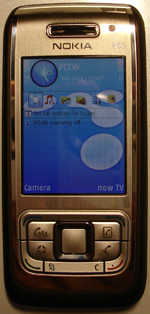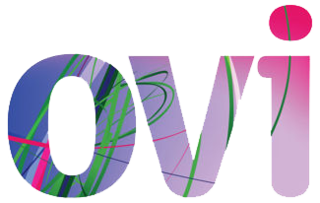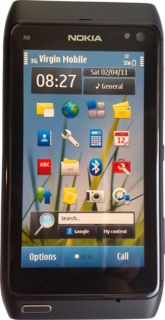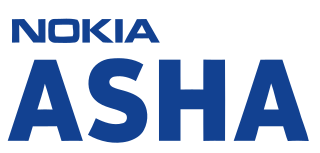
The Nokia 1100 is a basic GSM mobile phone produced by Nokia. Over 250 million 1100s have been sold since its launch in late 2003, making it the world's best selling phone handset and the best selling consumer electronics device in the world at the time. The model was announced on 27 August 2003 and was discontinued in September 2009.
The Nokia 6131/Nokia 6133 is a Nokia clamshell phone introduced by Nokia in February 2006.

The Nokia N95 is a smartphone produced by Nokia as part of their Nseries line of portable devices. Announced in September 2006, it was released to the market in March 2007. The N95 ran S60 3rd Edition, on Symbian OS v9.2. It has a two-way sliding mechanism, which can be used to access either media playback buttons or a numeric keypad. It was first released in silver and later on in black, with limited edition quantities in gold and purple. The launch price of the N95 was around €550.

The Nokia E65 is a smartphone in the Eseries range, a S60 platform third edition device with slide action. It shared many of the features of the N95 released around the same time, but thinner, lighter and without the GPS. It was followed fairly quickly by the E66, which was very similar but gained an FM radio, a newer release of S60, A2DP bluetooth, GPS and 3.2 mpixel camera.

Some mobile phones support use of two SIM cards, described as dual SIM operation. When a second SIM card is installed, the phone either allows users to switch between two separate mobile network services manually, has hardware support for keeping both connections in a "standby" state for automatic switching, or has individual transceivers for maintaining both network connections at once.

Ovi by Nokia was the brand for Nokia's Internet services. The Ovi services could be used from a mobile device, computer or via the web. Nokia focused on five key service areas: Games, Maps, Media, Messaging and Music. Nokia's aim with Ovi was to include third party developers, such as operators and third-party services like Yahoo's Flickr photo site. With the announcement of Ovi Maps Player API, Nokia started to evolve their services into a platform, enabling third parties to make use of Nokia's Ovi services.

Nokia 5300 XpressMusic is a slider mobile phone by Nokia, part of the XpressMusic range. It was introduced on 26 September 2006 and released at the end of that year. It runs on Nokia Series 40 3rd Edition FP2.

Windows Phone (WP) is a discontinued family of mobile operating systems developed by Microsoft for smartphones as the replacement successor to Windows Mobile and Zune. Windows Phone featured a new user interface derived from the Metro design language. Unlike Windows Mobile, it was primarily aimed at the consumer market rather than the enterprise market.

The Nokia E71 is a smartphone introduced in May 2008 from the Eseries range with a QWERTY keyboard targeting business users worldwide. It runs on Symbian OS v9.2, with a Series 60 3rd Edition, second generation Feature Pack 1. The Nokia E71 succeeded the Nokia E61/61i models, building on the base design and form factor but enhancing on the feature set.
The form factor of a mobile phone is its size, shape, and style, as well as the layout and position of its major components.

The Nokia N8 is a touchscreen-based smartphone developed by Nokia. Announced on 27 April 2010, the Nokia N8 was the first device to run on the Symbian^3 mobile operating system and it was the company's flagship device for the year. It was released on 30 September 2010 at the Nokia Online Store before being released in markets around the world on 1 October 2010. There were two version made, the N8 and the N8-00. The N8 was made for Vodafone and locked to its networks, and the N8-00 was made by Microsoft and open network.

The Nokia N9 is a smartphone developed by Nokia, running on the Linux-based MeeGo mobile operating system. Announced in June 2011 and released in September, it was the first and only device from Nokia with MeeGo, partly because of the company's partnership with Microsoft announced that year. It was initially released in three colors: black, cyan and magenta, before a white version was announced at Nokia World 2011.

The Nokia Asha 302 is a QWERTY messenger feature phone powered by Nokia's Series 40 operating system. It was announced at Mobile World Congress 2012 in Barcelona along with other Asha phones - the Nokia Asha 202 and 203. The 302 is considered to be among the flagship of the Asha family. Its main features are the QWERTY keyboard, the pentaband 3G radio, SIP VoIP over 3G and Wi-Fi. Its design looks a lot like the older Nokia E6 with chrome slidings, giving it a somewhat premium look. A software update adds Mail for Exchange support.

The Nokia 215 is a Nokia-branded dual-band GSM feature phone by Microsoft Mobile. The phone is available in black, white, and bright green.

The Nokia 222 is a Nokia-branded dual-band GSM candybar-type phone originally developed by Microsoft Mobile and now sold by HMD Global. The phone is available in black, white.

HMD Global Oy, branded as HMD and Nokia Mobile, is a Finnish mobile phone manufacturer. The company is made up of the mobile phone business that Nokia sold to Microsoft in 2014, then bought back in 2016. HMD began marketing Nokia-branded smartphones and feature phones on 1 December 2016. The company has exclusive rights to the Nokia brand for mobile phones through a licensing agreement. The HMD brand is only used for corporate purposes and does not appear in advertising, whereas the name "Nokia Mobile" is used on social media.
The Nokia Actionman II is a revised edition of Nokia Actionman. It was launched in May 1984, 6 months after the launch of Actionman. It used the NMT 450 network. It has a monochromic LCD display. This car phone only supports calling features. Multimedia and Messaging are not supported by the Actionman. It has 100 channels which can be changed via the advanced numeric keypad of the mobile. The phone has a signal indicator to indicate the signal and frequency.

KaiOS is a mobile Linux distribution for keypad feature phones. It is developed by KaiOS Technologies Limited; a company based in Hong Kong, whose largest shareholder is Chinese multinational electronics conglomerate TCL Corporation. KaiOS runs on feature phones made with low-power hardware and low power consumption. KaiOS supports modern connectivity technologies like 4G LTE E, VoLTE, GPS, and Wi-Fi. KaiOS runs HTML5-based apps. KaiOS supports over-the-air updates and has a dedicated app marketplace (KaiStore). Some applications are preloaded, including Facebook and YouTube. As of 1 April 2020, there are 500+ apps in KaiStore. The mobile operating system is comparatively lightweight on hardware resource usage, and is able to run on devices with just 256 megabytes (MB) of memory.

The Nokia 101 is an analogue mobile phone from Nokia released in 1992 that have variants for the NMT, AMPS and ETACS cellular networks. The 101 is considered to have been a significant handset for Nokia, one that started the company's major success in the market that decade. It was the first model in the new 3-digit naming strategy for analogue handsets.















